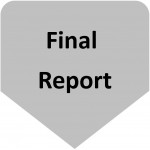 One of the main goals of the current tax reform efforts is to reduce income tax rates on individuals and corporations. The tax on UBTI is calculated using the corporate tax rates, if the exempt organization is a corporation, or the trust tax rates, if the exempt organization is a trust. Thus, a reduction in the tax rates for corporations and trusts will result in lower taxes imposed on most exempt organizations with respect to their unrelated businesses. Whether the lower rates result in lower UBIT depends upon the deductions contained in the final legislation.
One of the main goals of the current tax reform efforts is to reduce income tax rates on individuals and corporations. The tax on UBTI is calculated using the corporate tax rates, if the exempt organization is a corporation, or the trust tax rates, if the exempt organization is a trust. Thus, a reduction in the tax rates for corporations and trusts will result in lower taxes imposed on most exempt organizations with respect to their unrelated businesses. Whether the lower rates result in lower UBIT depends upon the deductions contained in the final legislation.
H.R.1, the proposed tax reform bill of the House of Representatives entitled “Tax Cuts and Jobs Act,” appears here. For a description of the Senate proposal, click here.
Corporations
The rate of tax for exempt organizations that are not trusts, and for state colleges and universities, is governed by the corporate income tax rates under §11. §511(a). Under present law, four graduated tax brackets apply:
- 15% on taxable income that does not exceed $50,000
- 25% on taxable income that exceeds $50,000 but does not exceed $75,000
- 34% on taxable income that exceeds $75,000 but does not exceed $10,000,000, and
- 35% on taxable income that exceeds $10,000,000.
Additional income taxes of up to $11,750 or $100,000 are imposed if a corporation has taxable income exceeding $100,000 or $15,000,000, respectively.
Under both the House and Senate tax reform proposals, the four graduated rates under current §11 are repealed and replaced by a single corporate tax rate of 20%. H.R. 1, §3001(b)(1). Under the House proposal, the 20% rate would take effect for tax years beginning after December 31, 2017. Under the Senate version, the flat rate would apply for tax years beginning after December 31, 2018.
The proposed flat tax rate of 20% is greater than the rate currently imposed on UBTI not exceeding $50,000 but is less than the three other rates currently imposed when UBTI exceeds $50,000. Thus, most exempt organizations would have their UBIT rates reduced under the proposed plan.
Example: Exempt organization Z is a charity that operates as a corporation. Z derives income from the regular conduct of an unrelated trade or business. During the tax year, Z derived $700,000 in gross income from the unrelated business and incurred $600,000 in expenses. Assume Z’s UBTI is $100,000. Under present law, Z would owe $22,250 unrelated business income tax before credits or any other adjustments. Under the proposed flat rate of 20%, Z’s unrelated business income tax would be $20,000 before credits or any other adjustments.
Comment: The U.S. has traditionally had a progressive tax rate system with graduated tax rates. The arguments generally made in favor of graduated rates are that they reduce income inequality and promote fairness by placing the greatest burden on those able to pay more. Opponents argue that progressive rates inhibit economic growth by reducing savings and investment. The replacement of the graduated corporate tax rates with a flat rate represents a significant change in the area of corporate taxation.
Trusts
For those exempt organizations that operate in trust form, the current income tax rates range from 15% to 39.6%, with the highest rate payable on income exceeding $12,500. §1(e).The trust tax rates imposed in H.R. 1 range from from 12% to 39.6%, applied as follows:
- 25% bracket threshold amount 2,550 §1(b)(1)(D)
- 35% bracket threshold amount 9,150 §1(b)(2)(D)
- 39% bracket threshold amount 12,500 §1(b)(3)(C)
These dollar amounts are adjusted for inflation for tax years beginning after 2018. §1(c).
Under the Senate’s proposed plan, the current brackets for trusts would be replaced by rates ranging from 10% to 38.5%, with the highest rate payable on income exceeding $12,500.
Thus, under either the 2017 tax reform plans, the UBIT on exempt organizations taxed as trusts would be only marginally reduced. Taking into account tax deductions that may no longer be available, exempt organizations taxed as trusts may actually see an increase in their UBIT.
Conclusion
The status of tax reform is changing daily. Lower income tax rates increase the federal deficit unless they are offset by spending cuts. Given the differing priorities of our representatives in Congress, compromises must be reached before any tax reform can be enacted. This post is just a reminder that lower income tax rates for individuals, trusts, and corporations will affect tax rates for purposes of the UBIT.
Additional Resources:
Andrew Kreighbaum, Taxing T-shirt Revenue, Inside Higher Education (November 13, 2017)

